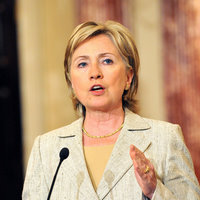With President Barack Obama’s announcement last week that all U.S. troops will be out of Iraq by the end of this year, most Americans breathed a sigh of relief. Lost in those headlines was the collective shudder of national security experts and practitioners who know Washington’s dirty little secret: More than 10 years after the war against violent extremism began, the United States still lacks true deployable civilian power. The handover in Iraq from the Defense Department to the State Department at the end of this year will showcase this Achilles’ heel, one that will haunt U.S. foreign policy until it is truly addressed.
Part of the problem is a misidentification of the problem. In military circles, the tools of power are referred to by the acronym “DIME” -- diplomatic, informational, military and economic. Many observers have already pointed to the numerical imbalance between the U.S. military and diplomatic corps to highlight the dearth in U.S. civilian power, but what the U.S. needs is not just more diplomats but another civilian foreign policy tool in its DIME kit: a “C” that stands for operational, deployable civilian capability able to work in semi- or even non-permissive environments.
A diplomat -- the “D” -- is by definition less operational and is often evacuated when the bullets start flying. At times, diplomats are also limited by their very role. For example, several years ago, when Pakistan appeared on the brink of state failure, many U.S. government civilians identified a need to conduct operational planning for such a contingency. This planning, however, could not take place at Foggy Bottom, or even include State Department personnel in their official capacity, because if word leaked that U.S. diplomats were actively planning for the collapse of the Pakistani government, relations between the two countries’ officials would become frosty at best. The tabletop exercise did take place, but at a think tank.

